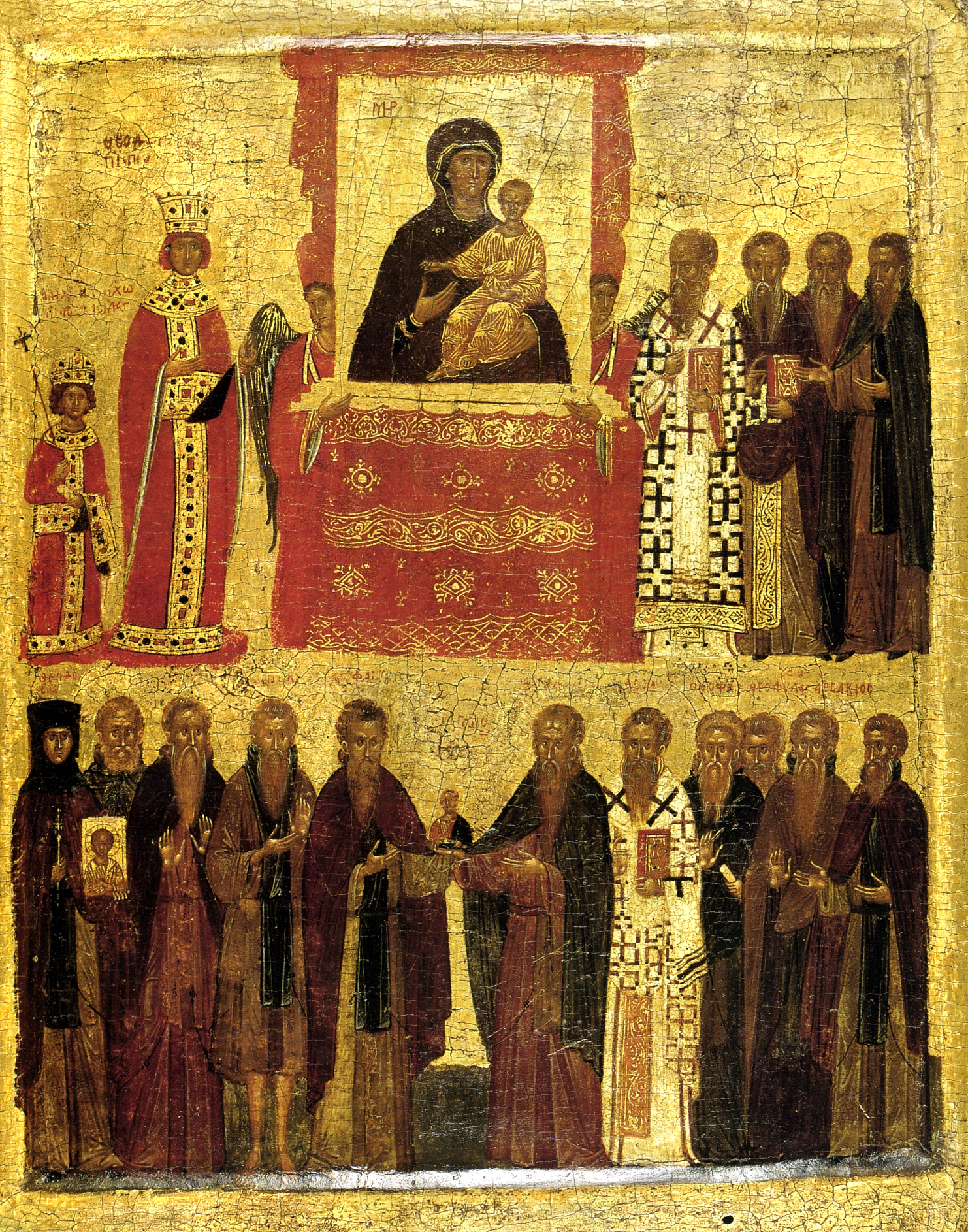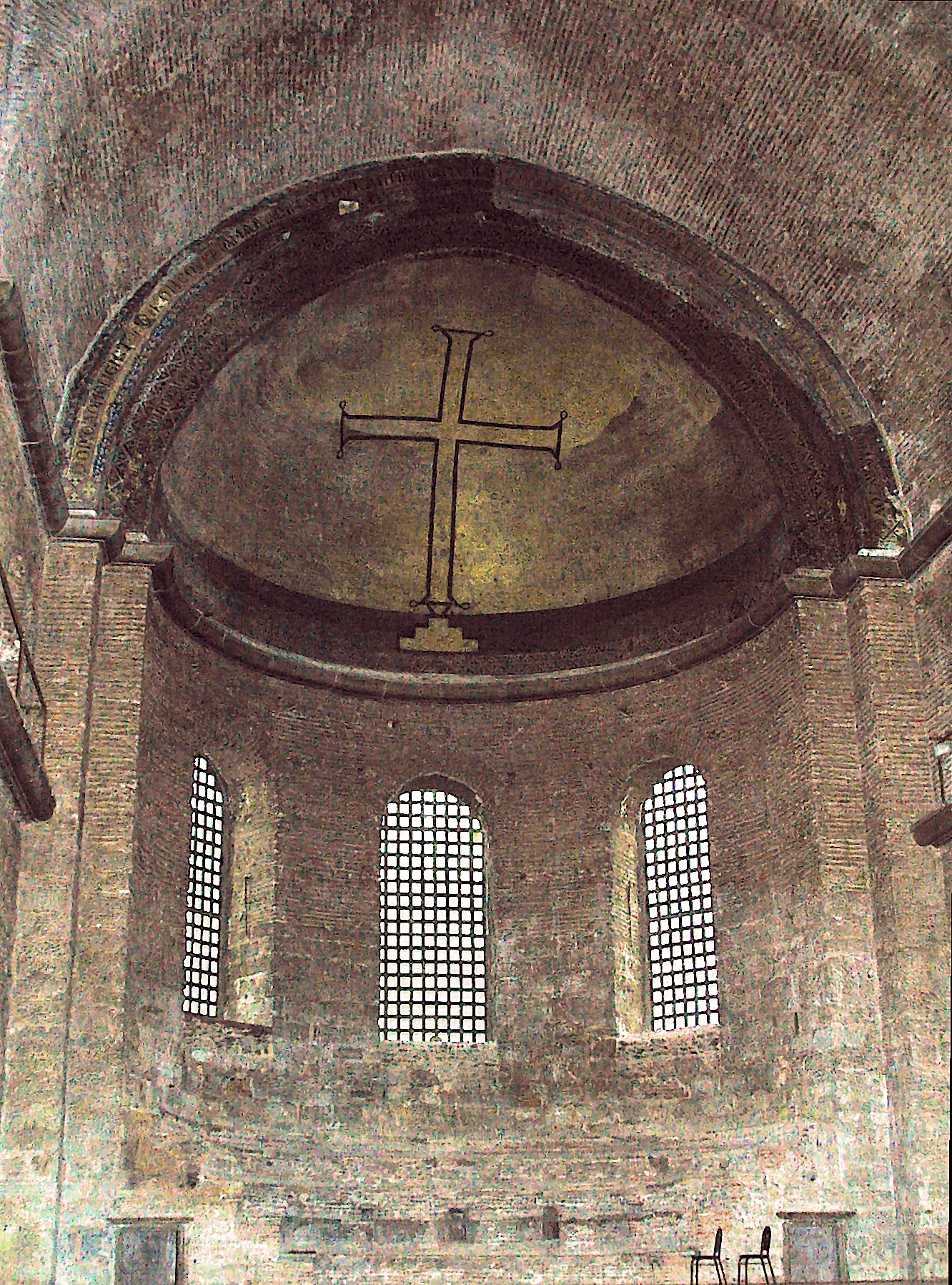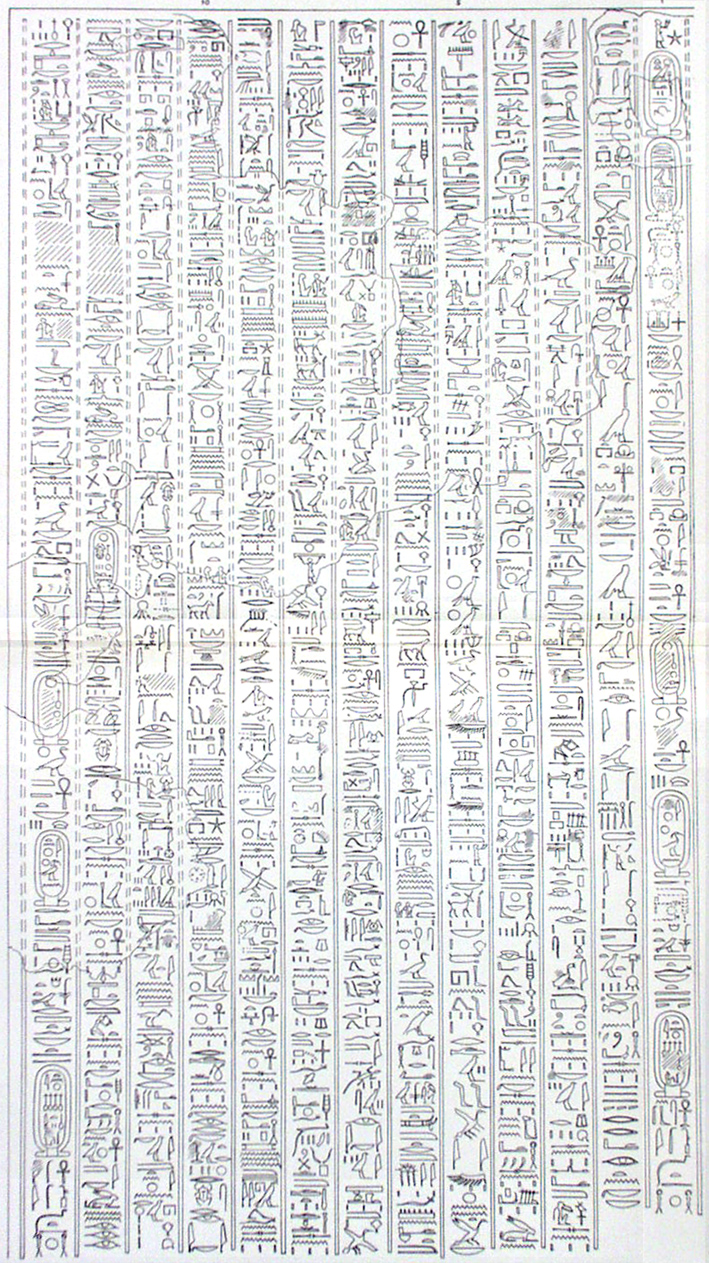|
Iconoclasm
Iconoclasm ()From . ''Iconoclasm'' may also be considered as a back-formation from ''iconoclast'' (Greek: εἰκοκλάστης). The corresponding Greek word for iconoclasm is εἰκονοκλασία, ''eikonoklasia''. is the social belief in the importance of the destruction of icons and other images or monuments, most frequently for religious or political reasons. People who engage in or support iconoclasm are called iconoclasts, a term that has come to be figuratively applied to any individual who challenges "cherished beliefs or venerated institutions on the grounds that they are erroneous or pernicious." Conversely, one who reveres or venerates religious images is called (by iconoclasts) an ''Iconolatry, iconolater''; in a Byzantine context, such a person is called an ''iconodule'' or ''iconophile.'' Iconoclasm does not generally encompass the destruction of the images of a specific ruler after their death or overthrow, a practice better known as ''damnatio memoriae'' ... [...More Info...] [...Related Items...] OR: [Wikipedia] [Google] [Baidu] |
Byzantine Iconoclasm
The Byzantine Iconoclasm () are two periods in the history of the Byzantine Empire when the use of religious images or icons was opposed by religious and imperial authorities within the Ecumenical Patriarchate (at the time still comprising the Roman-Latin and the Eastern-Orthodox traditions) and the temporal imperial hierarchy. The First Iconoclasm, as it is sometimes called, occurred between about 726 and 787, while the Second Iconoclasm occurred between 814 and 842. According to the traditional view, Byzantine Iconoclasm was started by a ban on religious images promulgated by the Byzantine Emperor Leo III the Isaurian, and continued under his successors. It was accompanied by widespread destruction of religious images and persecution of supporters of the veneration of images. The Papacy remained firmly in support of the use of religious images throughout the period, and the whole episode widened the East–West Schism, growing divergence between the Byzantine and Carolingian Em ... [...More Info...] [...Related Items...] OR: [Wikipedia] [Google] [Baidu] |
Idolatry
Idolatry is the worship of an idol as though it were a deity. In Abrahamic religions (namely Judaism, Samaritanism, Christianity, Islam, and the Baháʼí Faith) idolatry connotes the worship of something or someone other than the Abrahamic God as if it were God. In these monotheistic religions, idolatry has been considered as the "worship of false gods" and is forbidden by texts such as the Ten Commandments. Other monotheistic religions may apply similar rules. For instance, the phrase '' false god'' is a derogatory term used in Abrahamic religions to indicate cult images or deities of non-Abrahamic Pagan religions, as well as other competing entities or objects to which particular importance is attributed. Conversely, followers of animistic and polytheistic religions may regard the gods of various monotheistic religions as "false gods" because they do not believe that any real deity possesses the properties ascribed by monotheists to their sole deity. Atheists, who do n ... [...More Info...] [...Related Items...] OR: [Wikipedia] [Google] [Baidu] |
Iconodule
Iconodulism (also iconoduly or iconodulia) designates the religious service to icons (kissing and honourable veneration, incense, and candlelight). The term comes from Neoclassical Greek εἰκονόδουλος (''eikonodoulos'') (from – ''icon (image)'' + – ''servant''), meaning "one who serves images (icons)". It is also referred to as iconophilism (also iconophily or iconophilia from – ''icon (image)'' + – ''love'') designating a positive attitude towards the religious use of icons. In the history of Christianity, iconodulism (or iconophilism) was manifested as a moderate position, between two extremes: iconoclasm (radical opposition to the use of icons) and iconolatry (idolatric veritable (full) adoration of icons). History In contrast to moderate or respectful adoration, various forms of latria of icons (''iconolatry'') were also starting to appear, mainly in popular worship. Since veritable (full) adoration was reserved for God alone, such an attitude t ... [...More Info...] [...Related Items...] OR: [Wikipedia] [Google] [Baidu] |
Icon
An icon () is a religious work of art, most commonly a painting, in the cultures of the Eastern Orthodox, Oriental Orthodox, Catholic Church, Catholic, and Lutheranism, Lutheran churches. The most common subjects include Jesus, Mary, mother of Jesus, Mary, saints, and angels. Although especially associated with portrait-style images concentrating on one or two main figures, the term also covers most of the religious images in a variety of artistic media produced by Eastern Christianity, including narrative scenes, usually from the Bible or the lives of saints. Icons are most commonly painted on wood panels with egg tempera, but they may also be cast in metal or carved in stone or embroidered on cloth or done in mosaic or fresco work or printed on paper or metal, etc. Comparable images from Western Christianity may be classified as "icons", although "iconic" may also be used to describe the static style of a devotional image. In the Greek language, the term for icon painting uses ... [...More Info...] [...Related Items...] OR: [Wikipedia] [Google] [Baidu] |
Byzantine Empire
The Byzantine Empire, also known as the Eastern Roman Empire, was the continuation of the Roman Empire centred on Constantinople during late antiquity and the Middle Ages. Having survived History of the Roman Empire, the events that caused the fall of the Western Roman Empire in the 5th centuryAD, it endured until the fall of Constantinople to the Ottoman Empire in 1453. The term 'Byzantine Empire' was coined only after its demise; its citizens used the term 'Roman Empire' and called themselves 'Romans'. During the early centuries of the Roman Empire, the western provinces were Romanization (cultural), Latinised, but the eastern parts kept their Hellenistic culture. Constantine the Great, Constantine I () legalised Christianity and moved the capital to Constantinople. Theodosius I, Theodosius I () made Christianity the state religion and Greek gradually replaced Latin for official use. The empire adopted a defensive strategy and, throughout its remaining history, expe ... [...More Info...] [...Related Items...] OR: [Wikipedia] [Google] [Baidu] |
Iconolatry
Iconolatry (Greek: εἰκών, ''eikon'', 'picture or image', + λατρεία, '' latreia'', 'veritable (full) worship or adoration') designates the idolatric worship or the adoration of icons. In the history of Christianity, iconolatry was mainly manifested in popular worship, as freedom of worship while others viewed it as superstitious belief in the divine nature of icons or deities. It was practiced as a focal point on icons, and other deities representing various saints, angels and the God. One of extreme practices of iconolatry was scraping parts of icons into the Holy Communion. Iconolatry is the opposite of iconoclasm, and it also should not be confused with iconophilia, designating the moderate veneration of icons. Both extreme positions, iconolatry and iconoclasm, were rejected in 787 by the Second Council of Nicaea, being the seventh Ecumenical Council. The Council decided that holy icons should not be destroyed, as was advocated and practiced by the Byzantine ico ... [...More Info...] [...Related Items...] OR: [Wikipedia] [Google] [Baidu] |
Byzantine
The Byzantine Empire, also known as the Eastern Roman Empire, was the continuation of the Roman Empire centred on Constantinople during late antiquity and the Middle Ages. Having survived the events that caused the fall of the Western Roman Empire in the 5th centuryAD, it endured until the fall of Constantinople to the Ottoman Empire in 1453. The term 'Byzantine Empire' was coined only after its demise; its citizens used the term 'Roman Empire' and called themselves 'Romans'. During the early centuries of the Roman Empire, the western provinces were Latinised, but the eastern parts kept their Hellenistic culture. Constantine I () legalised Christianity and moved the capital to Constantinople. Theodosius I () made Christianity the state religion and Greek gradually replaced Latin for official use. The empire adopted a defensive strategy and, throughout its remaining history, experienced recurring cycles of decline and recovery. It reached its greatest extent un ... [...More Info...] [...Related Items...] OR: [Wikipedia] [Google] [Baidu] |
Aten
Aten, also Aton, Atonu, or Itn (, reconstructed ) was the focus of Atenism, the religious system formally established in ancient Egypt by the late Eighteenth Dynasty pharaoh Akhenaten. Exact dating for the Eighteenth Dynasty is contested, though a general date range places the dynasty in the years 1550 to 1292 BCE. The worship of Aten and the coinciding rule of Akhenaten are major identifying characteristics of a period within the Eighteenth Dynasty referred to as the Amarna Period (1336 BCE). Atenism and the worship of the Aten as the sole god of ancient Egypt state worship did not persist beyond Akhenaten's death. Not long after his death, one of Akhenaten's Eighteenth Dynasty successors, Tutankhamun, reopened the state temples to other Egyptian gods and re-positioned Amun as the pre-eminent solar deity. Aten is depicted as a solar disc emitting rays terminating in human hands. Etymology The word ''Aten'' appears in the Old Kingdom as a noun meaning "disc" w ... [...More Info...] [...Related Items...] OR: [Wikipedia] [Google] [Baidu] |
Monolatry
Monolatry (, and ) is the belief in the existence of many gods, but with the consistent worship of only one deity. The term ''monolatry'' was perhaps first used by Julius Wellhausen. Atenism The pharaoh Akhenaten, who was initially enthroned as Amenhotep IV, initially introduced Atenism in the fifth year (approximately 1348–1346 BCE) of his reign during the Eighteenth Dynasty of Egypt. He raised Aten, once a relatively obscure solar deity representing the disk of the Sun, to the status of supreme deity in ancient Egyptian religion. The fifth year of his reign marked the beginning of his construction of a new capital, ''Akhetaten'' (Horizon of the Aten), at the site known today as " Amarna". Amenhotep IV officially changed his name to "Akhenaten" (Agreeable to the Aten) as evidence of his new worship. In addition to constructing a new capital in honor of Aten, Akhenaten also oversaw the construction of some of the most massive temple complexes of ancient Egypt, inclu ... [...More Info...] [...Related Items...] OR: [Wikipedia] [Google] [Baidu] |
Atenism
Atenism, also known as the Aten religion, the Amarna religion, and the Amarna heresy, was a religion in ancient Egypt. It was founded by Akhenaten, a pharaoh who ruled the New Kingdom under the Eighteenth Dynasty. The religion is described as monotheistic or monolatristic, although some Egyptologists argue that it was actually henotheistic. Atenism was centered on the cult of Aten, a god depicted as the disc of the Sun. Aten was originally an aspect of Ra, Egypt's traditional solar deity, though he was later asserted by Akhenaten as being the superior of all deities. In the 14th century BC, Atenism was Egypt's state religion for around 20 years, and Akhenaten met the worship of other gods with persecution; he closed many traditional temples, instead commissioning the construction of Atenist temples, and also suppressed religious traditionalists. However, subsequent pharaohs toppled the movement in the aftermath of Akhenaten's death, thereby restoring Egyptian civilization's ... [...More Info...] [...Related Items...] OR: [Wikipedia] [Google] [Baidu] |
Triumph Orthodoxy
The Roman triumph (Latin triumphus) was a celebration for a victorious military commander in ancient Rome. For later imitations, in life or in art, see Trionfo. Numerous later uses of the term, up to the present, are derived directly or indirectly from the Roman one. Triumph may refer to: Geography * Triumph, Idaho * Triumph, Illinois * Triumph, Louisiana * Triumph Township, Custer County, Nebraska * Triumph Township, Pennsylvania * Triumph, Guyana Business and transportation * Triumph (TWN), a defunct German motorcycle manufacturer * Triumph Cycle Co. Ltd., a British bicycle brand * Triumph Engineering Co Ltd, a defunct British motorcycle manufacturer * Triumph Group, an aerospace manufacturing and repair company * Triumph Hotels, an American collection of hotels * Triumph International, a worldwide underwear manufacturer * Triumph Motor Company, a British car manufacturer ** Triumph TR3 ** Triumph TR4 ** Triumph TR6 ** Triumph TR7 * Triumph Motorcycles Ltd, a current British ... [...More Info...] [...Related Items...] OR: [Wikipedia] [Google] [Baidu] |






